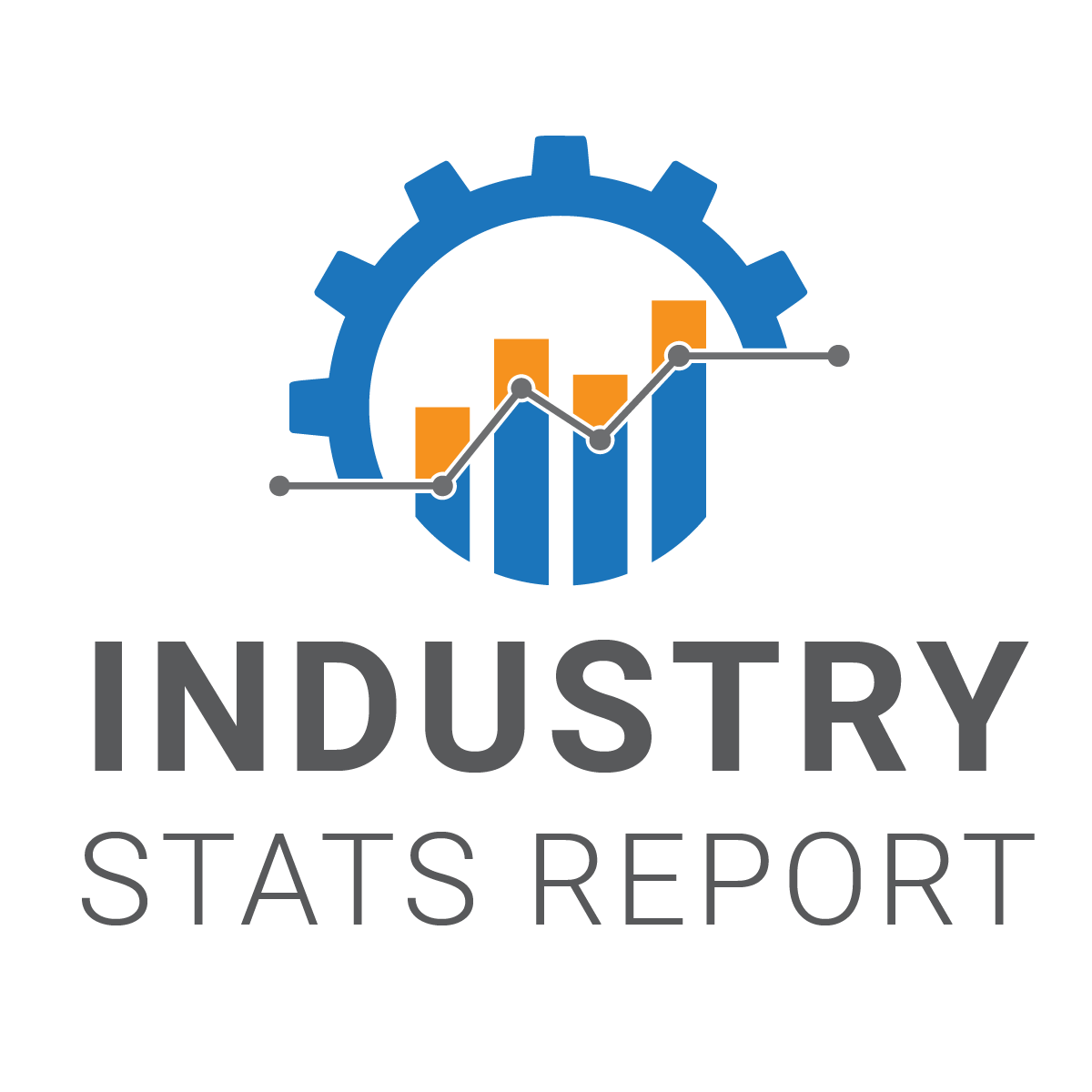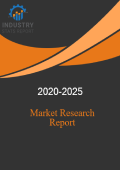
Cognitive Computing
Cognitive Computing Market 2020 By Technology (Machine learning, Automated reasoning, Information retrieval, Natural language processing), By Industry(BFSI, Energy, Healthcare, Government, IT & Telecom, Manufacturing, Transportation, Education, Agriculture), By deployment (On-premise, Cloud) Forecast to 2025
Report ID: BMRC 1275 | Number of pages: 200 | Publish Date: Oct 2019 | Category: ICT and MediaGlobal Cognitive Computing Market is valued at 15.86 USD Billion in 2019 and expected to reach 76.64 USD Billion by 2025 with the CAGR of 30.02% over the forecast period.
Rapid technological advancements, growing advent of digitization and adoption of automated business processes, surging requirement of managing complex data, rising adoption of cloud-based services are the major factors for driving the growth of Global Cognitive Computing Market.
Scope of Global Cognitive Computing Market Report-
Cognitive computing is based on a self-learning system that uses machine learning techniques to perform specific tasks, similar to humans in an intelligent manner. The objective is to instill thought processes of a human in computer models, which can be achieved using self-learning algorithms using pattern recognition, data mining, and natural language processing.
Cognitive technology is a general concept, referring to various technologies that have analytical and reasoning skills similar to human cognition, such as artificial intelligence (AI), robotics, machine learning and analysis predictive. The IBM Watson supercomputer is a notable cognitive innovation that can understand natural language and "think" like humans.
The application of cognitive technology can be divided into three categories: 1) Cognitive automation uses robotic process technology for the automation of physical and digital tasks. These applications, like humans, capture and use information from multiple systems. 2) Cognitive understanding uses algorithms to detect patterns in large amounts of data and explain their meaning. These applications mimic the functioning of the human brain and improve analytical skills by learning data. 3) Cognitive Interaction Deploy intelligent agents and natural language processing discussion robots to perform hyper-personalized interactions. These apps can recognize voice commands, respond to messages, and take effective action effectively.
Cognitive Computing dates back to late 19th century when George Boole and Charles Babbage coined the term “Analytical engine”. Until then, several revisions have been made to artificial intelligence leading to a notable development on May 11, 1997, IBM’s Deep Blue exploded the research in AI, until 2011, when IBM pioneered into cognitive computing and launched its first very platform, Watson.
Global Cognitive Computing Market is segmented on the basis of technology, industry, deployment and application. On the basis of technology, the market is segmented into machine learning, automated reasoning, information retrieval, natural language processing and others. On the basis of industry, market is segmented into BFSI, energy, healthcare, government, IT, telecom, manufacturing, transportation, education, agriculture and others. On the basis of deployment, the market is segmented into cloud-based and on-premise. On the basis of application, the market is segmented into farms mechanization, robot functioning, social media management, eLearning, cyber privacy, video surveillance, automated cars, supply chain monitoring and others.
The regions covered in this Cognitive Computing market report are North America, Europe, Asia Pacific and rest of the World. On the basis of country level, market of Cognitive Computing is subdivided into U.S., Mexico, Canada, U.K., Germany, France, Italy, China, Japan, South East Asia, Africa, etc.
Cognitive Computing Companies-
Cognitive Computing Market report covers major key players in the market like,
IBM Corporation Palantir Technologies Google LLC Microsoft Corporation Enterra Solutions Nuance Communications Inc. HP Enterprise Development LP Tibco Software 3M Oracle Corp. NumentaGlobal Cognitive Computing Market Dynamics-
Rapid technological advancements, growing advent of digitization and adoption of automated business processes, surging requirement of managing large-scale complex data, rising adoption of cloud-based services and technologies like Big Data, AI, ML in businesses are the major factors for driving the growth of Global Cognitive Computing Market. As per the information revealed through 2018 IDG Cloud Computing study, around 76.82% of the business enterprises use at least one application or service that is on a cloud platform, the investment in which has been expected to cross USD 3.8 million in coming years. Large accomplishments are being done by major companies to promote Cognitive Computing. For instance, IBM, with the inception of its powerful cognitive computing platform Watson, combined machine learning and human intelligence in real-time physical world during Wimbledon Tennis Championship 2015, to provide an overview of major events during the match. Moreover, increased need for high speed computing and utilisation of new technologies to make efficient business intelligence decisions, reasonably low cost of cognitive platforms on account of a vast deployment of cloud-based services, and growing concern over saving operational costs are other key factors driving the market growth.
However, lack of technological expertise accompanied with an improper knowledge about technical handlings of cognitive computing in some SMEs, and privacy concerns over safeguarding data are some of the factors that might act as a restraining factor for the market growth.
There is a spiking increase in the benefits catered by cognitive computing to healthcare industry, where it is used to provide world-class healthcare facilities with the help of mobile analytics and automated services. For example, Hangzhou Cognitive Care in China, extends its services to rural-based oncologists who use it to tap valuable cancer specialist surgeons and their consultancies who are, otherwise, inaccessible for the people belonging in the region. Healthcare industry has a huge untapped and under-utilized potential which is expected to provide lucrative opportunities for Cognitive computing market.
North America is expected to remain a dominant region in the Global Cognitive Computing Market.
North America is the dominant region in the market with the largest share of the global Cognitive Computing market, the region is experiencing major developments in the market. The factors driving the growth are the continued development of advanced technologies in the region and the increment in the number of cognitive computing market participants. Businesses of all sizes are under pressure to manage large amounts of data due to which, companies are focusing on integrating AI and ML functions through cognitive IT solutions in the cloud. Asia Pacific region is expected to grow at a moderate rate, as the rapid growth of cloud-based services among SMEs paves the way for the growth of the cognitive computing market in the region. Moreover, countries like China are having an occupancy of leading ranks into adoption of cognitive services. As per IEEE publications, China has grown to nearly 27.68% in 2017 in the cognitive computing adoption, and has been ranked second, just after USA, in terms of cognitive functioning enterprises, reaching to a number of 1011. China’s goal is to expand the industry to USD 150.8 billion by 2030, due to which it encounters tremendous investments for the development of cognitive computing market.
Key Benefits of Global Cognitive Computing Market Report-
Global market report covers in depth historical and forecast analysis.
Global market research report provides detailed information about Market Introduction, Market Summary, Global Market Revenue (USD), Market Drivers, Market Restraints, Market Opportunities, Competitive Analysis, Regional and Country level.
Global market report helps to identify opportunities in market place.
Global market report covers extensive analysis of emerging trends and competitive landscape.
Global Cognitive Computing Market Segmentation: -
By Technology: Machine learning, Automated reasoning, Information retrieval, Natural language processing
By Industry: BFSI, Energy, Healthcare, Government, IT & Telecom, Manufacturing, Transportation, Education, Agriculture
By deployment: On-premise, Cloud
By Application: Farms Mechanization, Robot functioning, Social media management, E-Learning, Cyber privacy, Video surveillance, Automated cars, Supply chain monitoring
Regional & Country Analysis
North America, U.S., Mexico, Canada , Europe, UK, France, Germany, Italy , Asia Pacific, China, Japan, India, Southeast Asia, South America, Brazil, Argentina, Columbia, The Middle East and Africa, GCC, Africa, Rest of Middle East and Africa
Table of Content 1. Chapter - Report Methodology 1.1. Research Process 1.2. Primary Research 1.3. Secondary Research 1.4. Market Size Estimates 1.5. Data Triangulation 1.6. Forecast Model 1.7. USP’s of Report 1.8. Report Description 2. Chapter – Global Cognitive Computing Market Overview: Qualitative Analysis 2.1. Market Introduction 2.2. Executive Summary 2.3. Global Cognitive Computing Market Classification 2.4. Market Drivers 2.5. Market Restraints 2.6. Market Opportunity 2.7. Cognitive Computing Market: Trends 2.8. Porter’s Five Forces Analysis 2.8.1. Bargaining Power of Suppliers 2.8.2. Bargaining Power of Consumers 2.8.3. Threat of New Entrants 2.8.4. Threat of Substitute Product and Services 2.8.5. Competitive Rivalry within the Industry 2.9. Market Attractiveness Analysis 2.9.1. Market Attractiveness Analysis by Segmentation 2.9.2. Market Attractiveness Analysis by Region 3. Chapter - Global Cognitive Computing Market Overview: Quantitative Analysis 3.1. Global Cognitive Computing Market Revenue (USD Million), Market Share (%) and Growth Rate (%), 2014- 2025 3.2. Global Cognitive Computing Market Revenue Market Share (%), 2014- 2025 3.3. Global Cognitive Computing Market Sales (Number of Units), Market Share (%) and Growth Rate (%), 2014- 2025 3.4. Global Cognitive Computing Market Sales Market Share (%), 2014- 2025 4. Chapter – Global Cognitive Computing Market Analysis: Segmentation By Type 5. Chapter – Global Cognitive Computing Market Analysis: Segmentation By Application 6. Chapter - Global Cognitive Computing Market Analysis: By Manufacturer 6.1. Global Cognitive Computing Market Revenue (USD Million), by Manufacturer, 2014 - 2025 6.2. Global Cognitive Computing Market Share (%), by Manufacturer, 2018 6.3. Global Cognitive Computing Market Sales (Number of Units), by Manufacturer, 2014 - 2025 6.4. Global Cognitive Computing Market Share (%), by Manufacturer, 2018 6.5. Global Cognitive Computing Market Price (USD/Unit), by Manufacturer, 2014 - 2025 6.6. Global Cognitive Computing Market Revenue Growth Rate (%), by Manufacturer, 2014 – 2025 6.7. Merger & Acquisition 6.8. Collaborations and Partnership 6.9. New Product Launch 7. Chapter –Cognitive Computing Market: Regional Analysis 7.1. North America 7.1.1. North America Cognitive Computing Market Revenue (USD Million) and Growth Rate (%), 2014 – 2025. 7.1.2. North America Cognitive Computing Market Revenue (USD Million) By Country, 2014 – 2025. 7.1.3. North America Cognitive Computing Revenue Market Share (%) By Country, 2014 – 2025. 7.1.4. North America Cognitive Computing Market Revenue (USD Million) and Growth Rate, By Market Segmentation, 2014 – 2025. 7.1.5. North America Cognitive Computing Market Revenue (USD Million), Market Share (%) and Growth Rate, By Market Segmentation, 2014 – 2025. 7.1.6. North America Cognitive Computing Market Sales (Number of Units) and Growth Rate (%), 2014 – 2025. 7.1.7. North America Cognitive Computing Market Sales (Number of Units) By Country, 2014 – 2025. 7.1.8. North America Cognitive Computing Sales Market Share (%) By Country, 2014 – 2025. 7.1.9. North America Cognitive Computing Market Sales (Number of Units) and Growth Rate, By Market Segmentation, 2014 – 2025. 7.1.10. North America Cognitive Computing Market Sales (Number of Units), Market Share (%) and Growth Rate, By Market Segmentation, 2014 – 2025. 7.2. Europe 7.3. Asia Pacific 7.4. Latin America 7.5. Middle East & Africa 8. Chapter - Company Profiles




